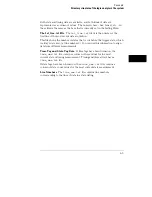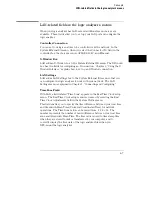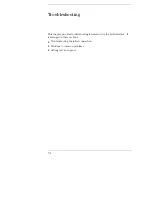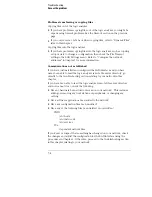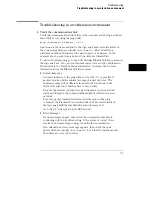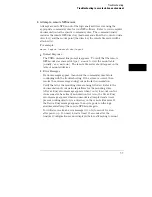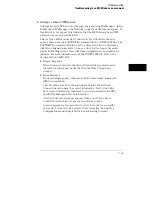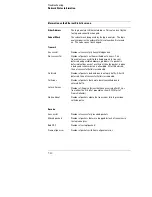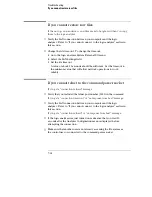
2
Attempt a remote NFS mount.
Attempt a remote NFS mount of the logic analyzer using the appropriate
command syntax for your NFS software. Refer to the NFS software
documentation for the specific command syntax. The command usually
includes the remote NFS directory (hostname and either the /control or /data
directory) and a disk drive designation.
•
Normal Response
The DOS command line prompt should reappear. To verify that the
remote NFS mount was successful, type
net use
to view the
mounted drives.
•
Error Messages
If an error message appears, check the command syntax before
continuing with the troubleshooting. If the syntax is correct, then
resolve the error message using your network documentation.
Verify that all of the mounting rules are being followed. Refer to the
documentation of your network platform for the mounting rules.
A Device Busy error message appears when you try to mount as
control if someone else has already mounted as control.
Also, if a Device Busy (or similar) error message appears, check the
CONFIG.SYS file for the LASTDRIVE= command. The LASTDRIVE=
command should be set to a drive letter that would make a disk drive
designation available to use as a drive for the remote file server while
still allowing the last three disk drive designations to be available for
printers. For more information, refer to the documentation for
MS-DOS.
An error message is also received if you try to mount too soon after
power-up. You need to wait at least 15 seconds after the Analyzer
Configuration menu is displayed before attempting to mount.
Troubleshooting
Troubleshooting in an MS-DOS environment
7–10
Summary of Contents for 1660 CS Series
Page 7: ...1 Connecting and Configuring...
Page 16: ...1 10...
Page 17: ...2 Accessing the Logic Analyzer File System...
Page 25: ...3 Using the X Window Interface...
Page 37: ...4 Retrieving and Restoring Data...
Page 50: ...4 14...
Page 51: ...5 Programming the Logic Analyzer...
Page 64: ...5 14...
Page 65: ...6 Concepts...
Page 72: ...6 8...
Page 73: ...7 Troubleshooting...
Page 104: ...Index Index 4...


